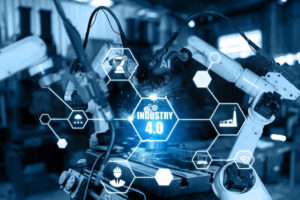THE ROLE OF ARTIFICIAL INTELLIGENCE IN CNC AUTOMATION
The Role of Artificial Intelligence in CNC Automation
The world of manufacturing has witnessed a significant transformation in recent years, with the integration of Artificial Intelligence (AI) into Computer Numerical Control (CNC) machines. This convergence of AI and CNC automation has revolutionized the manufacturing industry, offering numerous advantages such as increased productivity, reduced operational costs, and enhanced product quality. In this article, we will explore the pivotal role that AI plays in CNC automation, highlighting key points and its implications for the manufacturing sector.
1. Enhanced Precision and Efficiency
One of the primary benefits of AI in CNC automation is the remarkable improvement in precision and efficiency. AI algorithms can analyze and adapt to real-time data, making split-second adjustments to machine operations. This ensures that each cut, drill, or movement is executed with unparalleled accuracy, leading to high-quality end products. As a result, manufacturers can produce intricate and complex components with minimal error, reducing the need for rework and waste.
2. Predictive Maintenance
AI-driven CNC systems are equipped with predictive maintenance capabilities. These systems continuously monitor machine performance, tracking factors like temperature, vibration, and tool wear. By analyzing this data, AI can predict when a CNC machine is likely to fail and schedule maintenance before a breakdown occurs. This proactive approach not only minimizes downtime but also extends the lifespan of CNC equipment, saving manufacturers significant repair and replacement costs.
3. Optimization of Tool Paths
AI algorithms can optimize tool paths, reducing machining time and tool wear. By analyzing the geometry of a workpiece, material properties, and the capabilities of the CNC machine, AI can determine the most efficient path for the tool to follow. This not only speeds up production but also enhances tool longevity, resulting in cost savings for manufacturers.
4. Adaptive Machining
CNC machines integrated with AI are capable of adaptive machining. They can adjust their operations in real-time to account for variations in material properties or tool wear. This adaptability ensures that the final product meets quality standards, even when faced with unforeseen challenges. Manufacturers no longer need to discard imperfect parts, further reducing waste and increasing cost-efficiency.
5. Quality Control
AI-driven CNC automation systems can perform quality control checks during the machining process. They can use computer vision and sensors to inspect workpieces for defects, deviations, or inconsistencies. If any issues are detected, the system can take corrective actions, such as adjusting the machining parameters or alerting the operator. This results in improved product quality and reduces the likelihood of defects reaching the customer.
6. Data Analytics and Optimization
AI collects vast amounts of data from CNC machines. This data can be analyzed to identify patterns, inefficiencies, and areas for improvement. By leveraging this information, manufacturers can optimize their processes, reduce operational costs, and make informed decisions about resource allocation and production planning.
7. Human-Machine Collaboration
AI-enhanced CNC automation doesn’t replace human operators but complements their skills. CNC operators can focus on higher-level tasks such as programming, problem-solving, and process optimization, while AI handles repetitive and data-intensive aspects of CNC machining. This collaboration boosts overall productivity and ensures a skilled workforce remains an essential part of the manufacturing process.
In conclusion, the integration of Artificial Intelligence into CNC automation is transforming the manufacturing landscape. AI-driven CNC machines offer enhanced precision, predictive maintenance, optimization of tool paths, adaptive machining, quality control, data analytics, and the opportunity for effective human-machine collaboration. Manufacturers who embrace this technology can expect increased productivity, reduced costs, and higher product quality, positioning them at the forefront of the competitive manufacturing industry.


